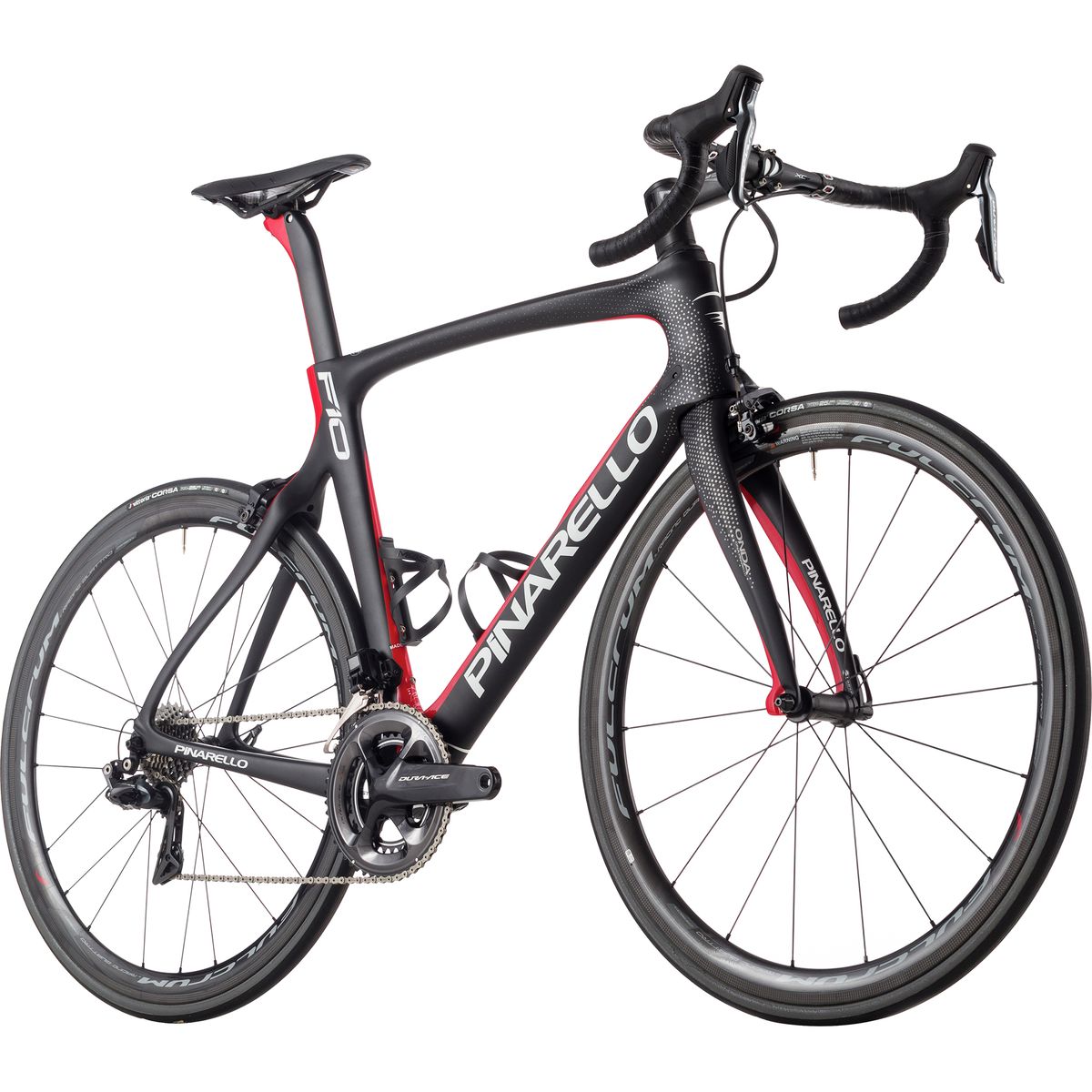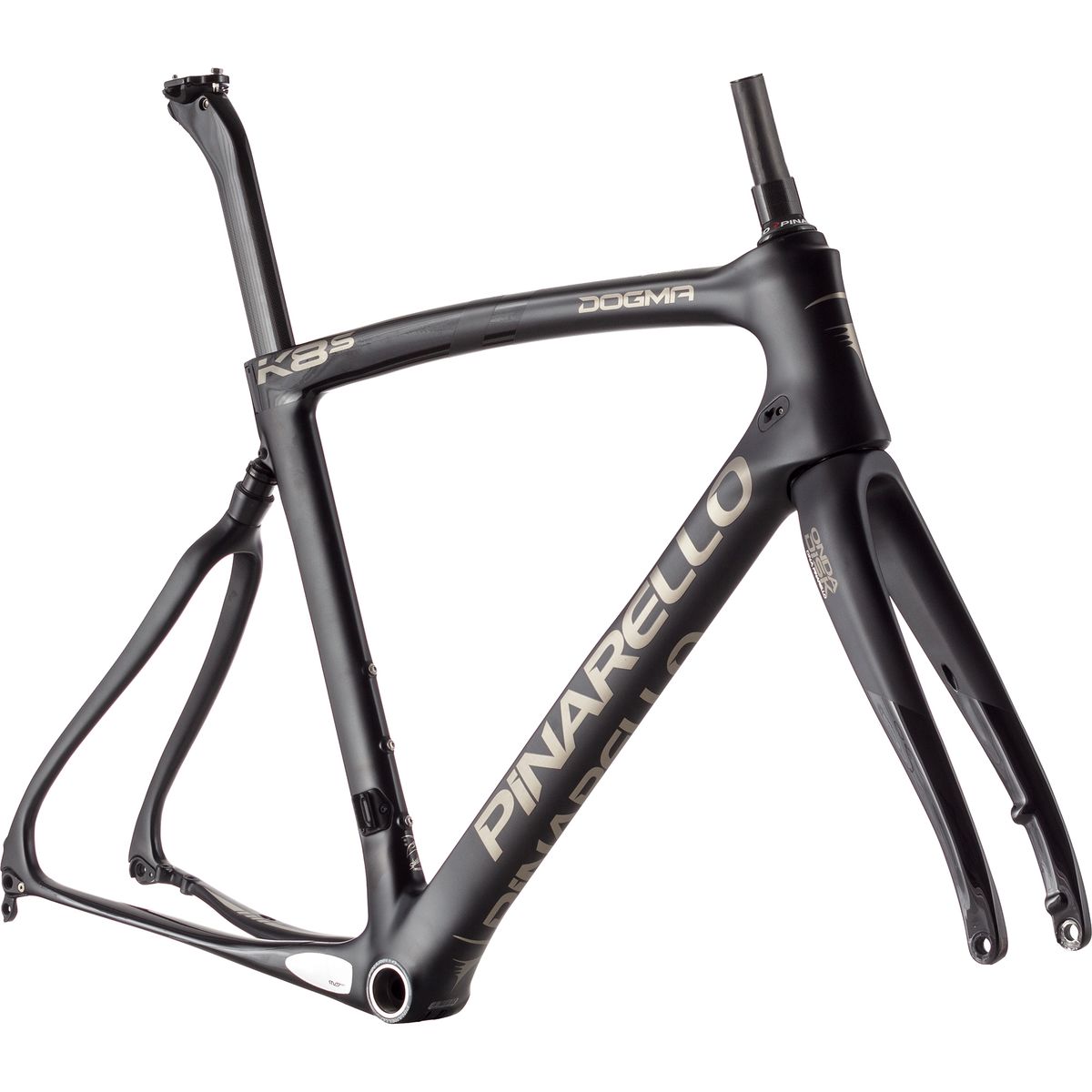
|
The launch of Pinarello's new Dogma F10 sends Team Sky's venerable F8 to the bench and sets an even lighter and stiffer bar for our road machine aspirations. While those baby blue striped power to weight ratios may not be in the cards for us mere mortals, international governing bodies' commercial availability rules mean that prized ride quality and precise Shimano electronic shifting is available to everyone with the 2017 Dogma F10 Dura Ace Di2 Complete Road Bike. Though the frame angles remain unchanged between model generations, the classic Dogma asymmetry returns in the F10 with a few subtle alterations that produce disproportionate changes. Asymmetry has been a staple tool in Pinarello's arsenal since 2009, and it's a surprisingly simple solution to one of cycling's most essential conundrums. Since the drivetrain is located on one side of the bike, the load created by pedaling isn't uniform across the frameset's left and right hemispheres. The drive side sees the majority of power transfer duties, so by building it up, Pinarello is able to maintain drive stiffness while cutting material on the non drive side, so lost grams don't translate to lost watts. Compared to the F8, the F10's asymmetry is technically more pronounced on the top tube, which cheats a bit more to the right, and the seat junction, which sees a slight tweak. Pinarello's tests indicate that these minor adjustments make the frame stiffer and lighter. If they're not solely responsible for the 7% and 6. 3% improvements listed above, they're certainly key contributors. Despite those remarkable claims, the changes are hard to detect with the naked eye hence technically above, and the frame's asymmetry is much more apparent in places like the seat stayseat tube junction. The F10's enhanced asymmetry give it one of the most immediately recognizable silhouettes in the industry, but those lines aren't just artistry they're inspired by the Dogma F10's Bolide TT DNA, which surfaces both in its...
|



 Blog Feed
Blog Feed Follow on Twitter
Follow on Twitter Become a Facebook Fan
Become a Facebook Fan Flickr
Flickr MySpace
MySpace



